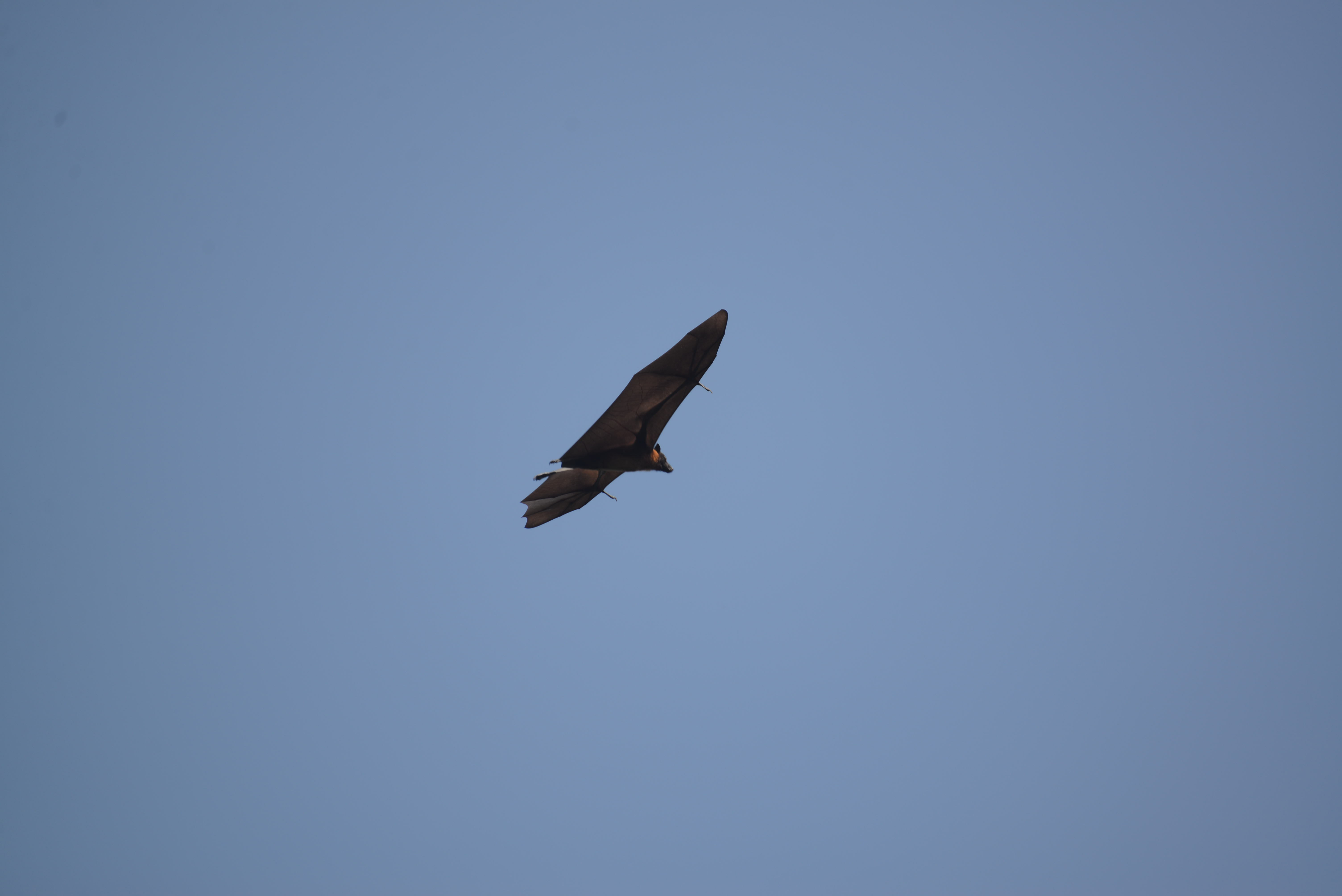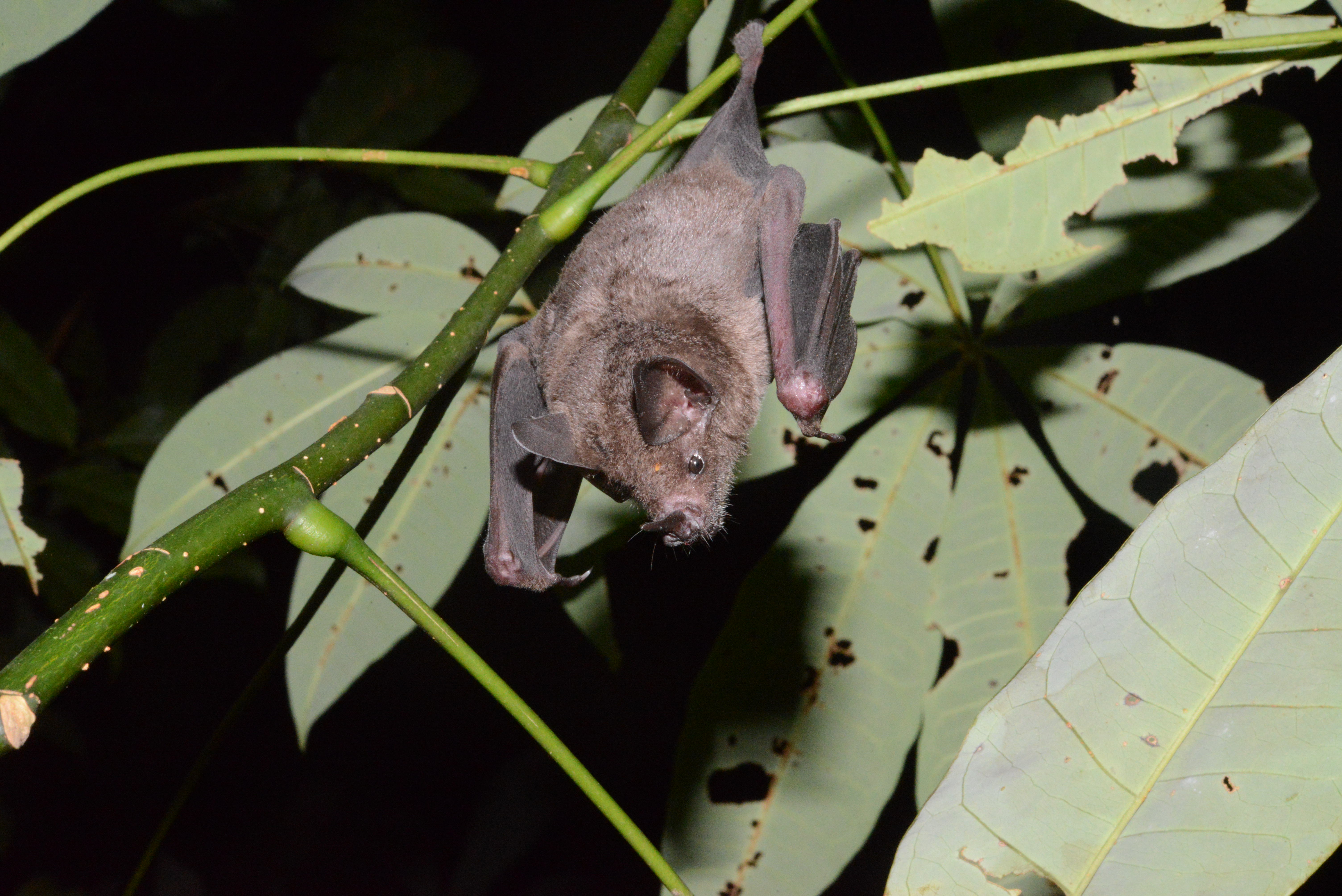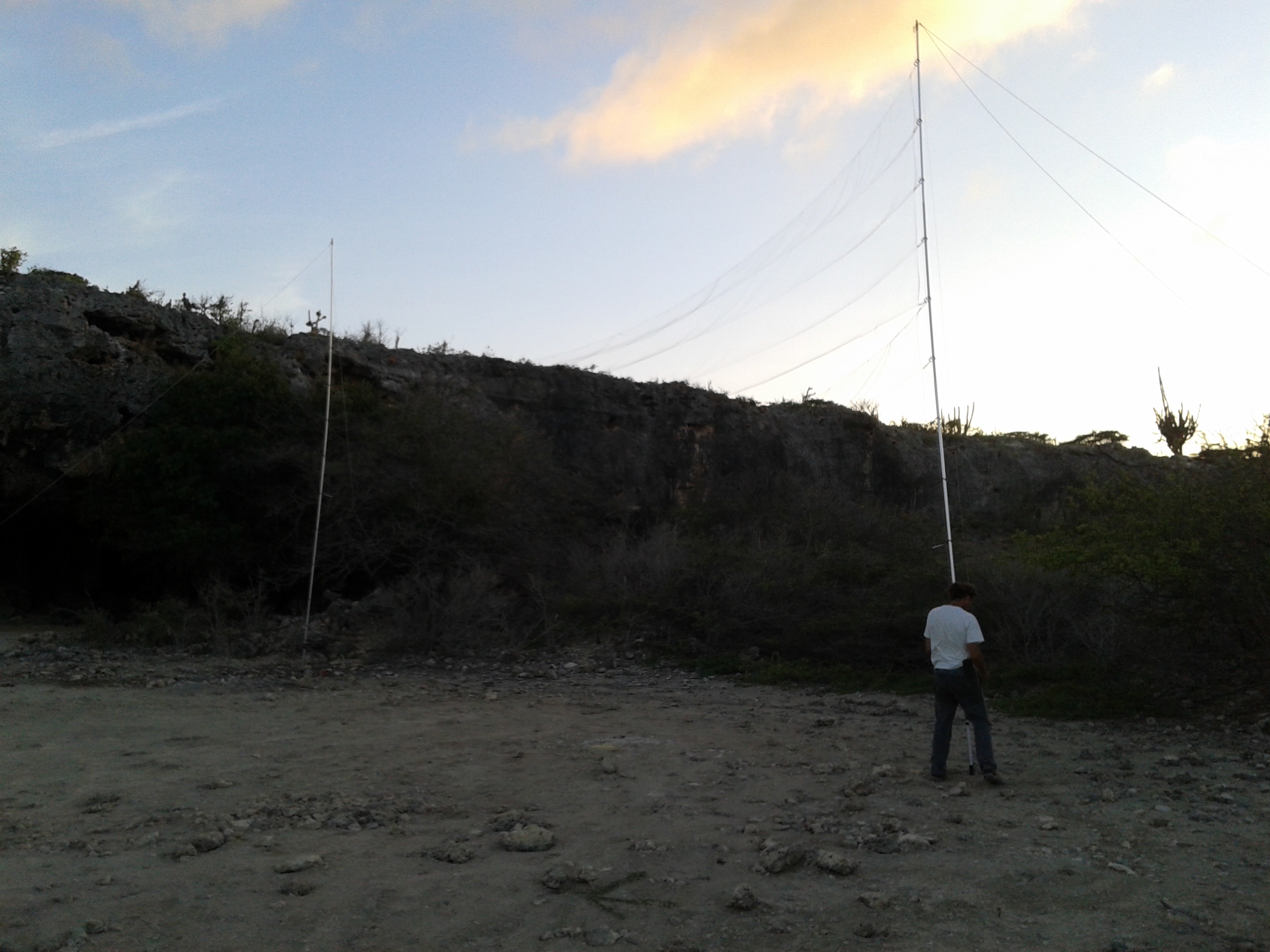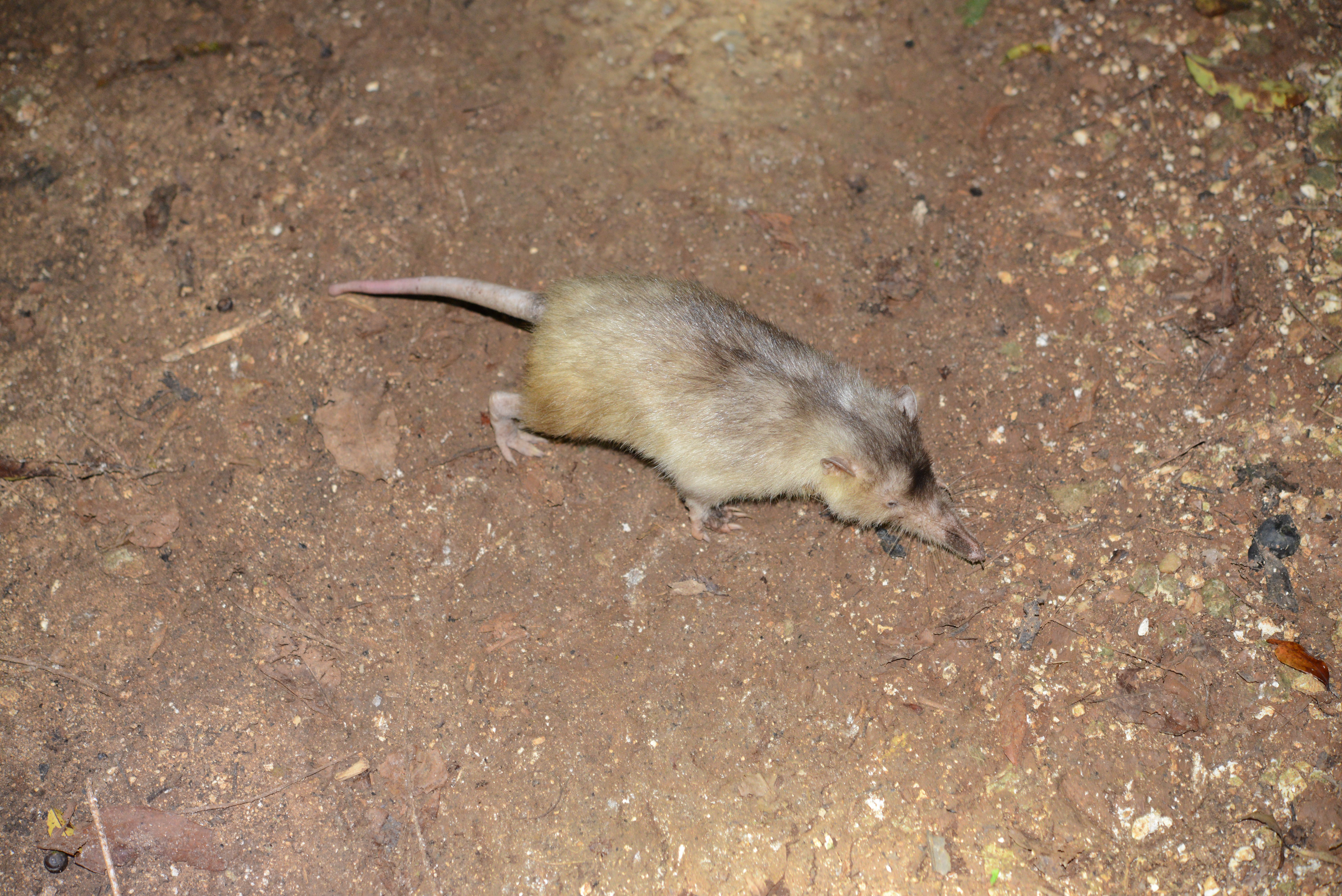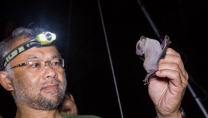
Burton Lim
Assistant Curator, Mammals
Interests: Bats, Biodiversity, Biogeography, Community Ecology, Evolution, Mammalogy
Exhibitions & Galleries: Bat Cave, Life in Crisis: Schad Gallery of Biodiversity, Out of the Depths: The Blue Whale Story, Wildlife Photographer of the Year
Phone: 416.586.5771
@burtonlimBio
B.Sc., Zoology, University of Toronto, 1980-1984
M.Sc., Biology, York University, 1994-1996
Ph.D., Ecology and Evolutionary Biology, University of Toronto, 1999-2007
Certificate in Global Journalism, Munk School of Global Affairs, U of T, 2012-2013
Burton Lim is Assistant Curator of Mammalogy in the Department of Natural History at the
Born, raised and educated in
His dissertation examined the molecular phylogenetics of New World sheath-tailed bats (Family Emballonuridae), their origin, divergence times, biogeography in Central and
He uses information gathered from faunal surveys in the Guiana Shield (primarily
Dr. Lim is also participating in the International Barcode of Life (iBOL) project to create a genetic reference system for species identification and discovery of mammals. And he couldn’t pass up the once-in-a-life-time chance to skin a blue whale, the largest animal to ever live on earth, when 1 of 9 that had accidentally died during a year of exceptional ice formation in the Gulf of St. Lawrence washed ashore beside the boardwalk of
Since 2017, Burton has been Chair of the Board of Directors of the North American Society for Bat Research (NASBR). In addition, he has been Associate Editor of Acta Chiropterlogica – an international journal on bat research – since 2015.
ROM Links
- Ask ROM Anything: Burton Lim
- Covid-19 Giving Bats a Bad Rep
- Sequencing vampire bat DNA
- Paradise lost: proximity to the Soufrière Hills volcano has had a dramatic impact on the bats of Montserrat
Video Links
- Operation Wallacea – Ex Situ: Museum Research, Fieldwork and Collections
- TVO – The Agenda: Vilified Beasts: Reconsidering the Bat
- ROM Governors - Back to the Depths: The Great Whales Teaser Trailer
- Cryptic species of bats in Dominican Republic and across the Caribbean based on DNA barcoding
- Experts & Objects: From Bats to Balata
- Bats with Dr. Burton Lim!
- TVO – Digital Media: Endangered Ontario: Little brown bat
Other Links
Publications since 2018
Loureiro, L.O., M.D. Engstrom, and B.K. Lim. 2020. Does evolution of echolocation calls and morphology in Molossus result from convergence or stasis? PLoS ONE 15(9): e0238261. https://doi.org/10.1371/journal.pone.0238261
Garbino, G.S.T., B.K. Lim, and V.C. Tavares. 2020. Systematics of big-eyed bats, genus Chiroderma Peters, 1860 (Chiroptera: Phyllostomidae). Zootaxa, 4846(1): 1-93. https://doi.org/10.11646/zootaxa.4846.1.1
Lim, B.K., L.O. Loureiro, and G.S.T. Garbino. 2020. Cryptic diversity and range extension in the big-eyed bat genus Chiroderma (Chiroptera: Phyllostomidae). ZooKeys, 918: 41-63. http://doi.org/10.3897/zookeys.918.48786
Loureiro, L.O., M.D. Engstrom, and B.K. Lim. 2020. Comparative phylogeography of mainland and insular species of Neotropical molossid bats (Molossus). Ecology and Evolution. 10: 389–409. https://doi.org/10.1002/ece3.5903
Loureiro, L.O., M.D. Engstrom, and B.K. Lim. 2020. Single nucleotide polymorphisms (SNPs) provide unprecedented resolution of species boundaries, phylogenetic relationships, and genetic diversity in the mastiff bat (Molossus). Molecular Phylogenetics and Evolution, 143: https://doi.org/10.1016/J.YMPEV.2019.106690.
Catzeflis, F.M., B.K. Lim, and C.R. Da Silva. 2019. Litter size and seasonality in reproduction for Guianan rodents and opossums. Studies on Neotropical Fauna and Environment, 54: 31-39 https://doi.org/10.1080/01650521.2018.1528655
Lang, D., B.K. Lim, Y. Gao, and X. Wang. 2019. Adaptive evolutionary expansion of the ribonuclease 6 in Rodentia. Integrative Zoology, 14: 306-317. https://doi.org/10.1111/1749-4877.12382
Lew, D. and B.K. Lim. 2019. Mammals. Pp. 333-371, in Biodiversity of Pantepui: the pristine “lost world” of the Neotropical Guiana Highlands (V. Rull, T. Vegas-Vilarrúbia, O. Huber, and C. Señaris, eds.). Academic Press: Elsevier, London, UK.
Loureiro, L.O., M.D. Engstrom, B.K. Lim, C.L. Gonzalez, and J. Juste. 2019. Not all Molossus are created equal: genetic variation in the mastiff bat reveals diversity masked by conservative morphology. Acta Chiropterologica, 21: 51-64. Https://doi.org/10.3161/15081109ACC2019.21.1.004
Phillips, C.D., J.L. Dunnum, R.C. Dowler, L.C. Bradley, H.J. Garner, K.A. MacDonald, B.K. Lim, M.A. Revelez, M.L. Campbell, H.L. Lutz, N. Ordóñez Garza, J.A. Cook, R.D. Bradley, and the Systematic Collections Committee of the American Society of Mammalogists. 2019. Curatorial guidelines and standards of the American Society of Mammalogists for collections of genetic resources. Journal of Mammalogy, 100: 1690-1694. https://DOI.org/10.1093/jmammal/gyz111
Taylor, P.J., B.K. Lim, M. Pennay, P. Soisook, T. Kingston, L.O. Loureiro, L.M. Moras, and T. Kingston. 2019. Family Molossidae (Free-tailed bats). Pp. 620-672, in Handbook of the Mammals of the World, Volume 9, Bats (D.E. Wilson and R.A. Mittermeier, eds.). Lynx Edicions, Barcelona.
Wang, X., B.K. Lim, N. Ting, J. Hu, Y. Liang, C. Roos, and L. Yu. 2019. Reconstructing the phylogeny of new world monkeys (platyrrhini): evidence from multiple non-coding loci. Current Zoology, 65: 579-598 https://doi.org/10.1093/cz/zoy072
Aguilera-Miller, E.P., B.K. Lim, R.W. Murphy, and S.T. Alvarez-Castañeda. 2018. Dominance by extremely high aggressive behaviors in relation to genetic microstructure in matrilines. Mammalian Biology, 89: 1-6. https://doi.org/10.1016/j.mambio.2017.12.001
Gutierrez, E.A., G.M. Castiglione, J.M. Morrow, R.K. Schott, L.O. Loureiro, B.K. Lim, and B.S.W. Chang. 2018. Functional shifts in bat dim-light visual pigment are associated with differing echolocation abilities and reveal molecular adaptation to photic-limited environments. Molecular Biology and Evolution, 35: 2422-2434 https://doi.org/10.1093/molbev/msy140
Gutierrez, E.A., R.K. Schott, M.W. Preston, L.O. Loureiro, B.K. Lim, and B.S.W. Chang. 2018. The role of ecological factors in shaping bat cone opsin evolution. Proceedings of the Royal Society B, 285: 20172835. http://dx.doi.org/10.1098/rspb.2017.2835
Lim, B.K., and T.E. Lee, Jr. 2018. Community ecology and phylogeography of bats in the Guianan savannas of northern South America. Diversity, 10(4): 129 https://doi.org/10.3390/d10040129
Lim, B.K., I. Roopsind, W. Prince, and J. Rob. 2018. Small mammals of the Upper Berbice River Region in Guyana. Pp. 88-99, in Biodiversity Assessment Survey of the Upper Berbice Region, Guyana (Alonso, L.E., J. Persaud and A. Williams. eds). BAT Survey Report No. 3. WWF-Guianas, Guyana Office, Georgetown, Guyana. https://wwfeu.awsassets.panda.org/downloads/biodiversity_assessment_survey_of_the_upper_berbice_region_2018.pdf
Loureiro, L.O., B.K. Lim, and M.D. Engstrom. 2018. A new species of mastiff bat (Chiroptera, Molossidae, Molossus) from Guyana and Ecuador. Mammalian Biology, 90: 10-21. https://doi.org/10.1016/j.mambio.2018.01.008
Ruedi, M., J.L. Eger, B.K. Lim, and G. Csorba. 2018. A new genus and species of vespertilionid bat from the Indomalayan Region. Journal of Mammalogy, 99: 209-222. https://DOI.org/10.1093/jmammal/gyx156

